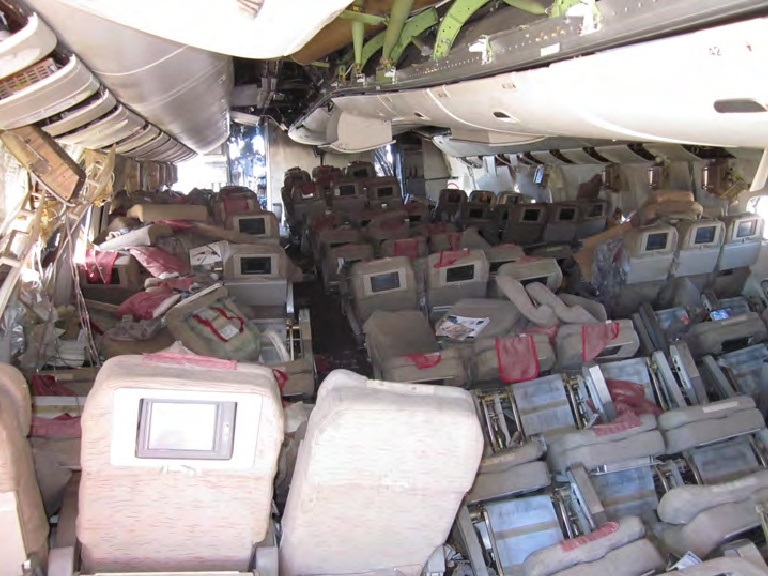06 July 2013 - Asiana Airlines 214
On July 6, 2013, Flight OZ214 took off from Incheon International Airport (ICN) at 5:04 p.m. KST (08:04 UTC), 34 minutes after its scheduled departure time. It was scheduled to land at San Francisco International Airport (SFO) at 11:04 a.m. PDT (18:04 UTC).
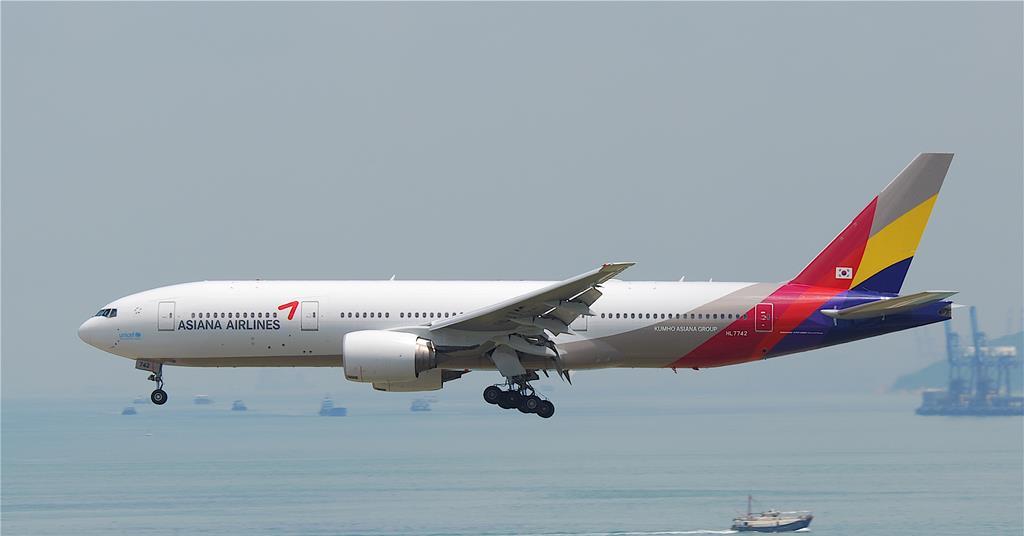
The flight was cleared for a visual approach to runway 28L at 11:21 a.m. PDT, and told to maintain a speed of 180 knots (330 km/h; 210 mph) until the aircraft was 5 miles (8.0 km) from the runway. At 11:26 a.m., Northern California TRACON ("NorCal Approach") passed air traffic control to the San Francisco tower. A tower controller acknowledged the second call from the crew at 11:27 a.m. when the plane was 1.5 miles (2.4 km) away, and gave clearance to land.
The weather was very good; the latest METAR reported light wind, 10 miles (16 km) visibility (the maximum it can report), no precipitation, and no forecast or reports of wind shear. The pilots performed a visual approach assisted by the runway's precision approach path indicator (PAPI).
At 11:28 a.m., HL7742 crashed short of runway 28L's threshold. The landing gear and then the tail struck the seawall that projects into San Francisco Bay. Both engines and the tail section separated from the aircraft. The NTSB noted that the main landing gear, the first part of the aircraft to hit the seawall, "separated cleanly from the aircraft as designed". The vertical and both horizontal stabilizers fell on the runway before the threshold.
The remainder of the fuselage and wings rotated counter-clockwise approximately 330 degrees, as it slid westward. Video showed it pivoting about a wing and the nose while sharply inclined to the ground. It came to rest to the left of the runway, 2,400 feet (730 m) from the initial point of impact at the seawall.
After a minute or so, a dark plume of smoke was observed rising from the wreckage. The fire was traced to a ruptured oil tank above the right engine. The leaking oil fell onto the hot engine and ignited. The fire was not fed by jet fuel.
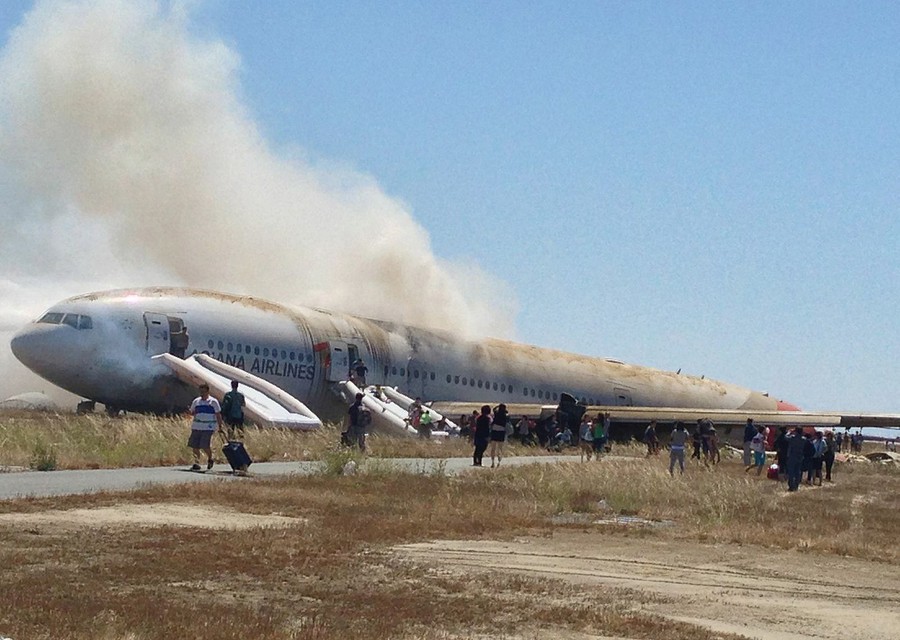
Two evacuation slides were deployed on the left side of the airliner and used for evacuation. Despite damage to the aircraft, "many ... were able to walk away on their own". The slides for the first and second doors on the right side of the aircraft (doors 1R and 2R) deployed inside the aircraft, pinning the flight attendants seated nearby.
According to NBC reports in September 2013, the US government had been concerned about the reliability of evacuation slides for decades: "Federal safety reports and government databases reveal that the NTSB has recommended multiple improvements to escape slides and that the Federal Aviation Administration has collected thousands of complaints about them. NBC Bay Area also discovered that just two months before the accident at SFO, regulators issued a safety alert for slides on the same airplane model — a Boeing 777-200ER — involved in the crash."
This was the third fatal crash in Asiana's 25-year history.
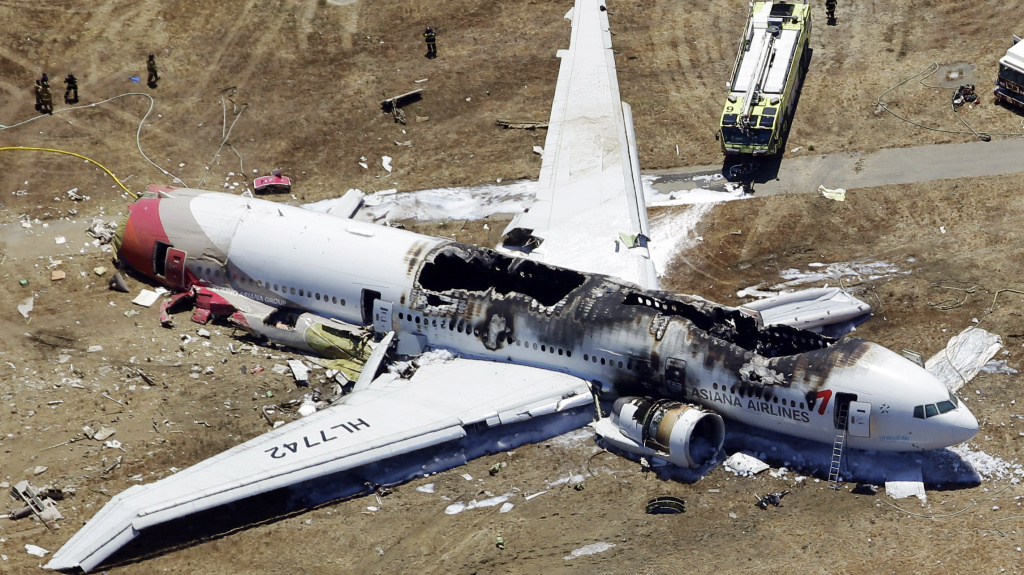
Of the 307 people aboard, two passengers died at the crash scene (one from being run over by an airport crash tender), and a third died in a hospital several days later. 181 others were injured, 12 of them critically. Among the injured were three flight attendants who were thrown onto the runway while still strapped in their seats when the tail section broke off after striking the seawall short of the runway. It was the first crash of a Boeing 777 that resulted in fatalities since its entry to service in 1995.
On June 24, 2014, a press report release by the NTSB found that the "Mismanagement of Approach and Inadequate Monitoring of Airspeed Led to Crash of Asiana flight 214". The NTSB determined that the flight crew mismanaged the initial approach and that the airplane was well above the desired glidepath. In response the captain selected an inappropriate autopilot mode, which without the captain's awareness, resulted in the autothrottle no longer controlling airspeed. The aircraft then descended below the desired glide path with the crew unaware of the decreasing airspeed. The attempted go-around was conducted below 100 ft by which time it was too late. Over-reliance on automation and lack of systems understanding by the pilots were cited as major factors contributing to the accident.

The NTSB further concluded that the flight crew’s insufficient monitoring of airspeed indications during the approach resulted from expectancy, increased workload, fatigue, and automation reliance and that the Pilot Flying’s faulty mental model of the airplane’s automation logic led to his inadvertent deactivation of automatic airspeed control. In addition, Asiana’s automation policy emphasized the full use of all automation and did not encourage manual flight during line operations. The flight crew’s mismanagement of the airplane’s vertical profile during the initial approach led to a period of increased workload that reduced the pilot monitoring’s awareness of the pilot flying’s actions around the time of the unintended deactivation of automatic airspeed control. Insufficient flight crew monitoring of airspeed indications during the approach likely resulted from expectancy, increased workload, fatigue, and automation reliance. Furthermore, lack of compliance with SOPs and CRM were cited as additional factors.
Download the full CVR transcript as published by the NTSB.
